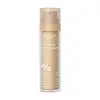What's inside
What's inside
 Key Ingredients
Key Ingredients

 Benefits
Benefits

 Concerns
Concerns

No concerns
 Ingredients Side-by-side
Ingredients Side-by-side

Water
Skin ConditioningNiacinamide
SmoothingAcetyl Glucosamine
Skin ConditioningTranexamic Acid
AstringentAlpha-Arbutin
AntioxidantPropanediol
SolventCetearyl Olivate
Glycerin
HumectantSorbitan Olivate
EmulsifyingXylitylglucoside
Humectant3-O-Ethyl Ascorbic Acid
Skin Conditioning4-Butylresorcinol
AntioxidantCentella Asiatica Leaf Extract
Skin ConditioningHydroxyphenoxy Propionic Acid
Skin ConditioningResveratrol
AntioxidantAnhydroxylitol
HumectantButylene Glycol
HumectantPhenoxyethanol
PreservativeXylitol
HumectantHydrolyzed Sodium Hyaluronate
Skin ConditioningSodium Hyaluronate
HumectantEctoin
Skin ConditioningTocopheryl Acetate
AntioxidantBetaine
HumectantGlucose
HumectantAllantoin
Skin ConditioningAmmonium Acryloyldimethyltaurate/Vp Copolymer
Disodium EDTA
Dipotassium Glycyrrhizate
HumectantCamellia Sinensis Leaf Extract
AntimicrobialSodium Lauroyl Lactylate
EmulsifyingSodium PCA
HumectantDiglucosyl Gallic Acid
Sorbitol
HumectantSodium Phosphate
BufferingCeramide NP
Skin ConditioningSerine
MaskingCeramide AP
Skin ConditioningGlycine
BufferingCholesterol
EmollientPhytosphingosine
Skin ConditioningTetrapeptide-21
Skin ConditioningGlutamic Acid
HumectantXanthan Gum
EmulsifyingCarbomer
Emulsion StabilisingNonapeptide-1
Skin ConditioningAlanine
MaskingArginine
MaskingLysine
Skin ConditioningThreonine
Proline
Skin ConditioningCeramide EOP
Skin ConditioningWater, Niacinamide, Acetyl Glucosamine, Tranexamic Acid, Alpha-Arbutin, Propanediol, Cetearyl Olivate, Glycerin, Sorbitan Olivate, Xylitylglucoside, 3-O-Ethyl Ascorbic Acid, 4-Butylresorcinol, Centella Asiatica Leaf Extract, Hydroxyphenoxy Propionic Acid, Resveratrol, Anhydroxylitol, Butylene Glycol, Phenoxyethanol, Xylitol, Hydrolyzed Sodium Hyaluronate, Sodium Hyaluronate, Ectoin, Tocopheryl Acetate, Betaine, Glucose, Allantoin, Ammonium Acryloyldimethyltaurate/Vp Copolymer, Disodium EDTA, Dipotassium Glycyrrhizate, Camellia Sinensis Leaf Extract, Sodium Lauroyl Lactylate, Sodium PCA, Diglucosyl Gallic Acid, Sorbitol, Sodium Phosphate, Ceramide NP, Serine, Ceramide AP, Glycine, Cholesterol, Phytosphingosine, Tetrapeptide-21, Glutamic Acid, Xanthan Gum, Carbomer, Nonapeptide-1, Alanine, Arginine, Lysine, Threonine, Proline, Ceramide EOP
Water
Skin ConditioningNiacinamide
SmoothingGlycerin
HumectantAcrylates/Beheneth-25 Methacrylate Copolymer
Centella Asiatica Extract
CleansingPhenoxyethanol
PreservativeUndecylenoyl Phenylalanine
Skin ConditioningCaprylyl/Capryl Glucoside
CleansingGluconobacter/Honey Ferment Filtrate
Skin ConditioningCoffea Arabica Seed Extract
MaskingPolysorbate 20
EmulsifyingHydroxyethyl Acrylate/Sodium Acryloyldimethyl Taurate Copolymer
Emulsion StabilisingDimethicone/Vinyl Dimethicone Crosspolymer
Skin ConditioningIsohexadecane
EmollientTriethanolamine
BufferingCaprylic/Capric Triglyceride
MaskingDimethicone
EmollientChlorphenesin
AntimicrobialCetyl Palmitate
EmollientPropylene Glycol
HumectantSodium Hydroxide
BufferingCichorium Intybus Root Extract
MaskingTrisodium Ethylenediamine Disuccinate
Polysorbate 80
EmulsifyingSorbitan Stearate
EmulsifyingPolysorbate 60
EmulsifyingCetearyl Methicone
Skin ConditioningHydrogenated Lecithin
EmulsifyingPalmitoyl Tetrapeptide-10
Skin ConditioningWater, Niacinamide, Glycerin, Acrylates/Beheneth-25 Methacrylate Copolymer, Centella Asiatica Extract, Phenoxyethanol, Undecylenoyl Phenylalanine, Caprylyl/Capryl Glucoside, Gluconobacter/Honey Ferment Filtrate, Coffea Arabica Seed Extract, Polysorbate 20, Hydroxyethyl Acrylate/Sodium Acryloyldimethyl Taurate Copolymer, Dimethicone/Vinyl Dimethicone Crosspolymer, Isohexadecane, Triethanolamine, Caprylic/Capric Triglyceride, Dimethicone, Chlorphenesin, Cetyl Palmitate, Propylene Glycol, Sodium Hydroxide, Cichorium Intybus Root Extract, Trisodium Ethylenediamine Disuccinate, Polysorbate 80, Sorbitan Stearate, Polysorbate 60, Cetearyl Methicone, Hydrogenated Lecithin, Palmitoyl Tetrapeptide-10
 Reviews
Reviews

Ingredients Explained
These ingredients are found in both products.
Ingredients higher up in an ingredient list are typically present in a larger amount.
Glycerin is already naturally found in your skin. It helps moisturize and protect your skin.
A study from 2016 found glycerin to be more effective as a humectant than AHAs and hyaluronic acid.
As a humectant, it helps the skin stay hydrated by pulling moisture to your skin. The low molecular weight of glycerin allows it to pull moisture into the deeper layers of your skin.
Hydrated skin improves your skin barrier; Your skin barrier helps protect against irritants and bacteria.
Glycerin has also been found to have antimicrobial and antiviral properties. Due to these properties, glycerin is often used in wound and burn treatments.
In cosmetics, glycerin is usually derived from plants such as soybean or palm. However, it can also be sourced from animals, such as tallow or animal fat.
This ingredient is organic, colorless, odorless, and non-toxic.
Glycerin is the name for this ingredient in American English. British English uses Glycerol/Glycerine.
Learn more about GlycerinNiacinamide is a multitasking form of vitamin B3 that strengthens the skin barrier, reduces pores and dark spots, regulates oil, and improves signs of aging.
And the best part? It's gentle and well-tolerated by most skin types, including sensitive and reactive skin.
You might have heard of "niacin flush", or the reddening of skin that causes itchiness. Niacinamide has not been found to cause this.
In very rare cases, some individuals may not be able to tolerate niacinamide at all or experience an allergic reaction to it.
If you are experiencing flaking, irritation, and dryness with this ingredient, be sure to double check all your products as this ingredient can be found in all categories of skincare.
When incorporating niacinamide into your routine, look out for concentration amounts. Typically, 5% niacinamide provides benefits such as fading dark spots. However, if you have sensitive skin, it is better to begin with a smaller concentration.
When you apply niacinamide to your skin, your body converts it into nicotinamide adenine dinucleotide (NAD). NAD is an essential coenzyme that is already found in your cells as "fuel" and powers countless biological processes.
In your skin, NAD helps repair cell damage, produce new healthy cells, support collagen production, strengthen the skin barrier, and fight environmental stressors (like UV and pollution).
Our natural NAD levels start to decline with age, leading to slower skin repair, visible aging, and a weaker skin barrier. By providing your skin niacinamide, you're recharging your skin's NAD levels. This leads to stronger, healthier, and younger looking skin.
Another name for vitamin B3 is nicotinamide. This vitamin is water-soluble and our bodies don't store it. We obtain Vitamin B3 from either food or skincare. Meat, fish, wheat, yeast, and leafy greens contain vitamin B3.
The type of niacinamide used in skincare is synthetically created.
Learn more about NiacinamidePhenoxyethanol is a preservative that has germicide, antimicrobial, and aromatic properties. Studies show that phenoxyethanol can prevent microbial growth. By itself, it has a scent that is similar to that of a rose.
It's often used in formulations along with Caprylyl Glycol to preserve the shelf life of products.
Water. It's the most common cosmetic ingredient of all. You'll usually see it at the top of ingredient lists, meaning that it makes up the largest part of the product.
So why is it so popular? Water most often acts as a solvent - this means that it helps dissolve other ingredients into the formulation.
You'll also recognize water as that liquid we all need to stay alive. If you see this, drink a glass of water. Stay hydrated!
Learn more about Water